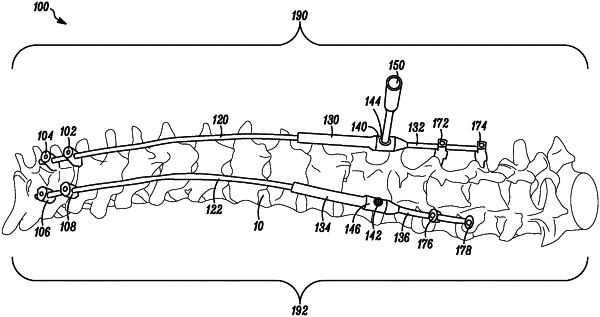| CPC A61B 17/7016 (2013.01) [G16H 20/40 (2018.01); G16H 40/63 (2018.01); A61B 2017/0011 (2013.01); A61B 2017/00115 (2013.01); A61B 2017/00221 (2013.01); A61B 2017/00734 (2013.01); A61B 2017/564 (2013.01)] | 15 Claims |

|
1. An automated method to manage an implantable growing rod assembly, the automated method comprising:
operating an implantable motor control circuit for a DC motor with a torsion sensor and a drive output adapted to translate an expansion rod along a longitudinal axis away from a housing, the expansion rod including a first piezoelectric sensor for measuring a tension force thereon and a second piezoelectric sensor for measuring a compression force thereon, the implantable motor control circuit includes a monitoring circuit for monitoring readings from the torsion sensor coupled with the DC motor and readings from the first piezoelectric sensor and the second piezoelectric sensor,
accessing data of a tension force measured by the first piezoelectric sensor and data of a compression force measured by the second piezoelectric sensor;
calculating an adjustment to be made to the expansion rod along the longitudinal axis; and
controlling the DC motor to implement the adjustment that has been calculated.
|